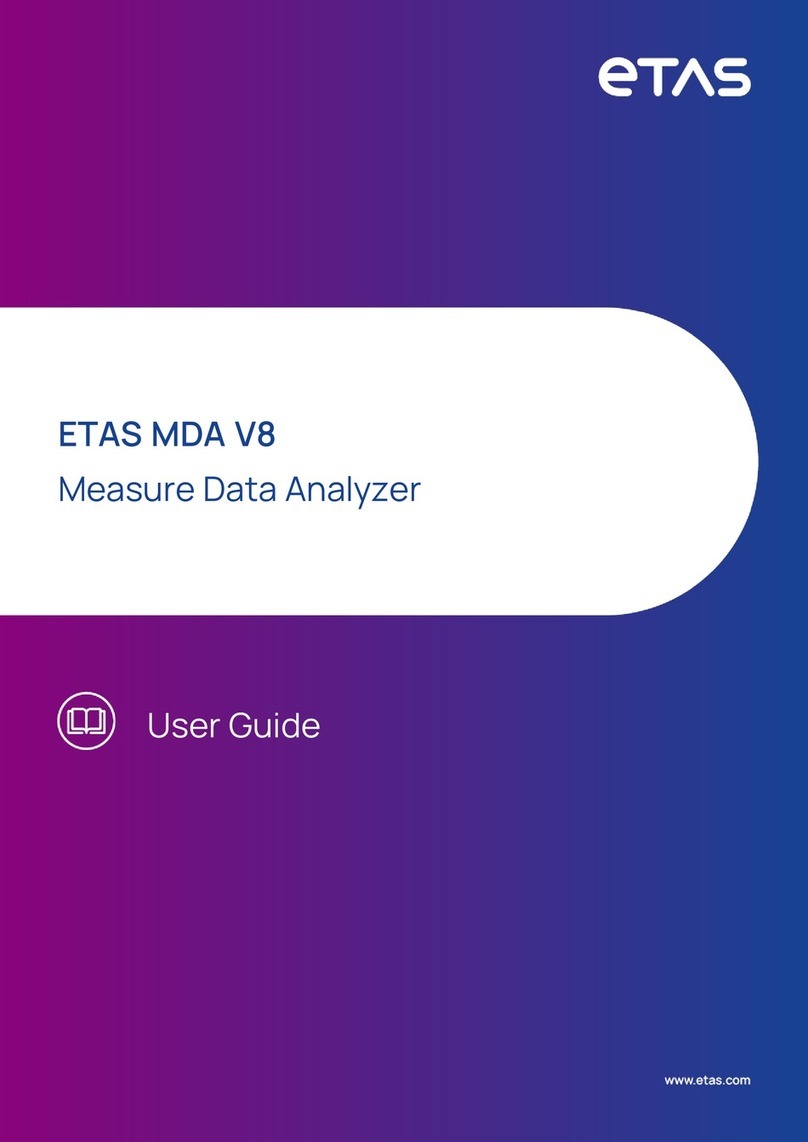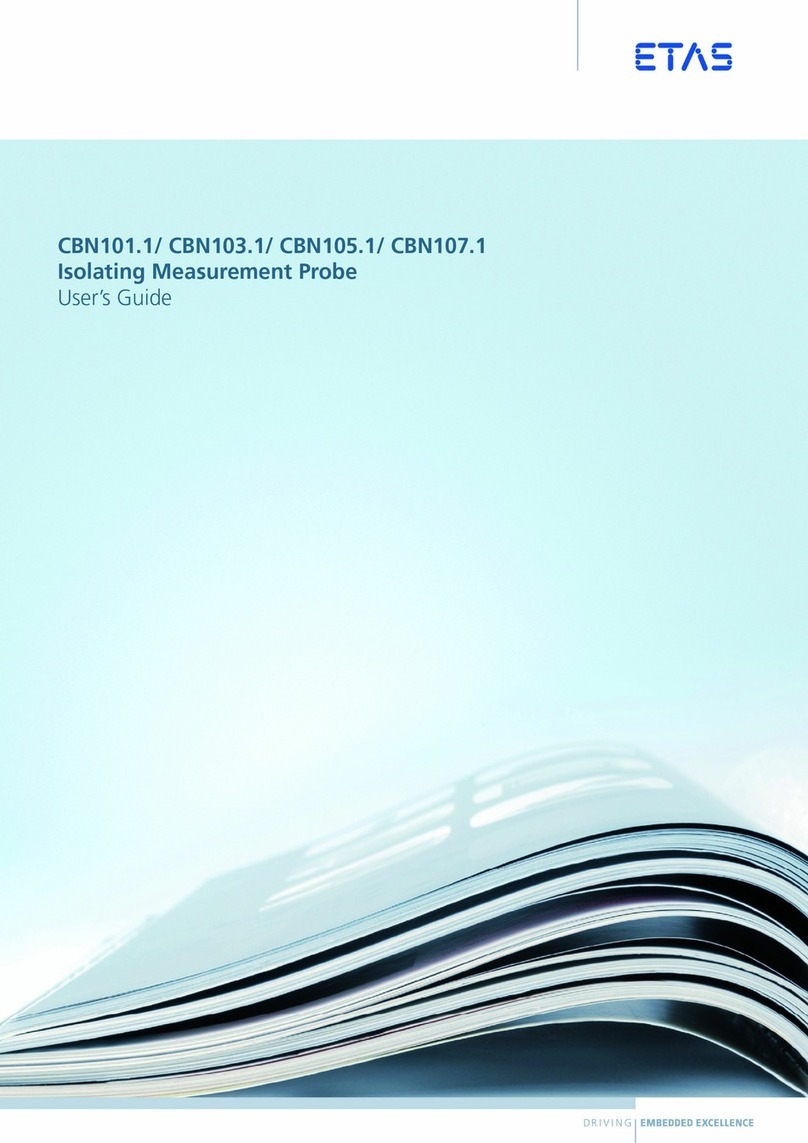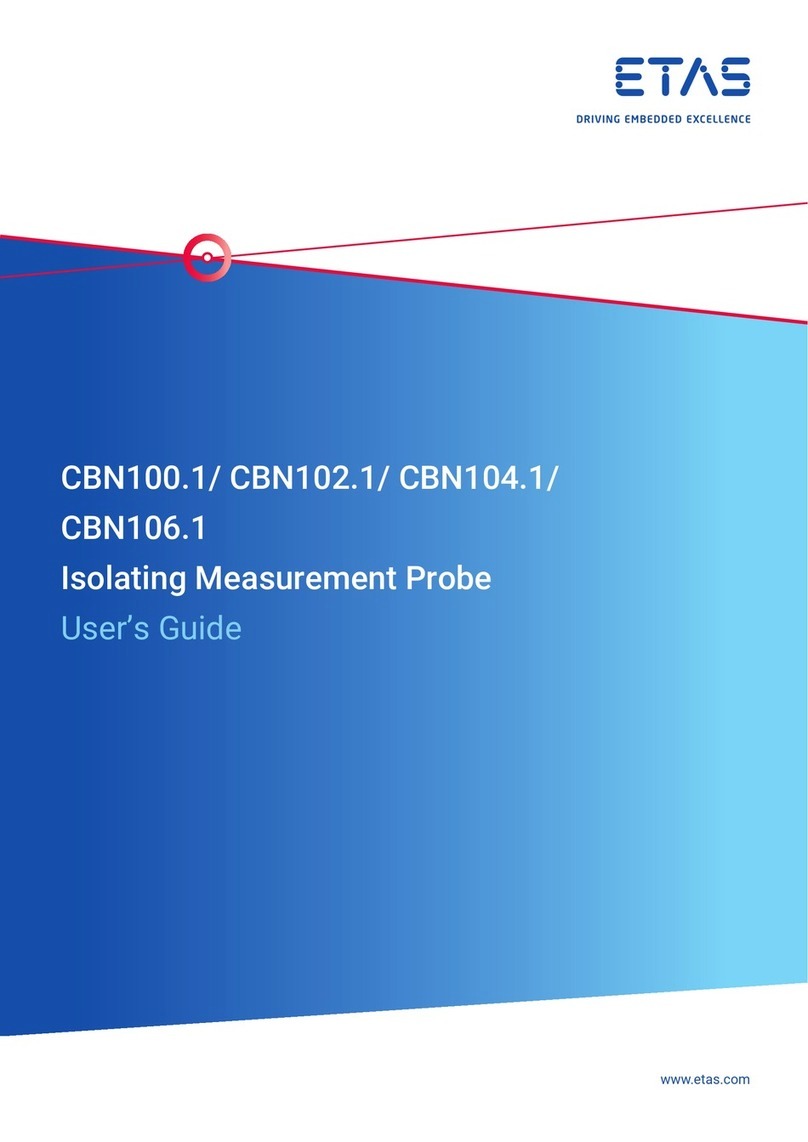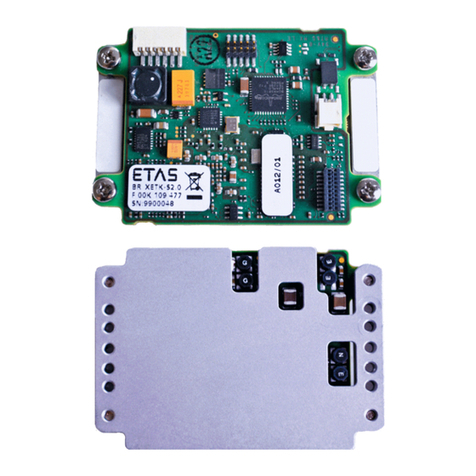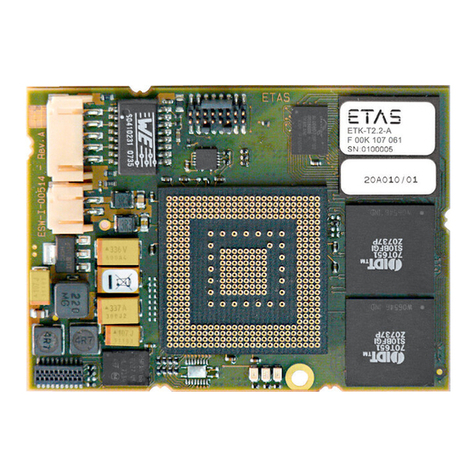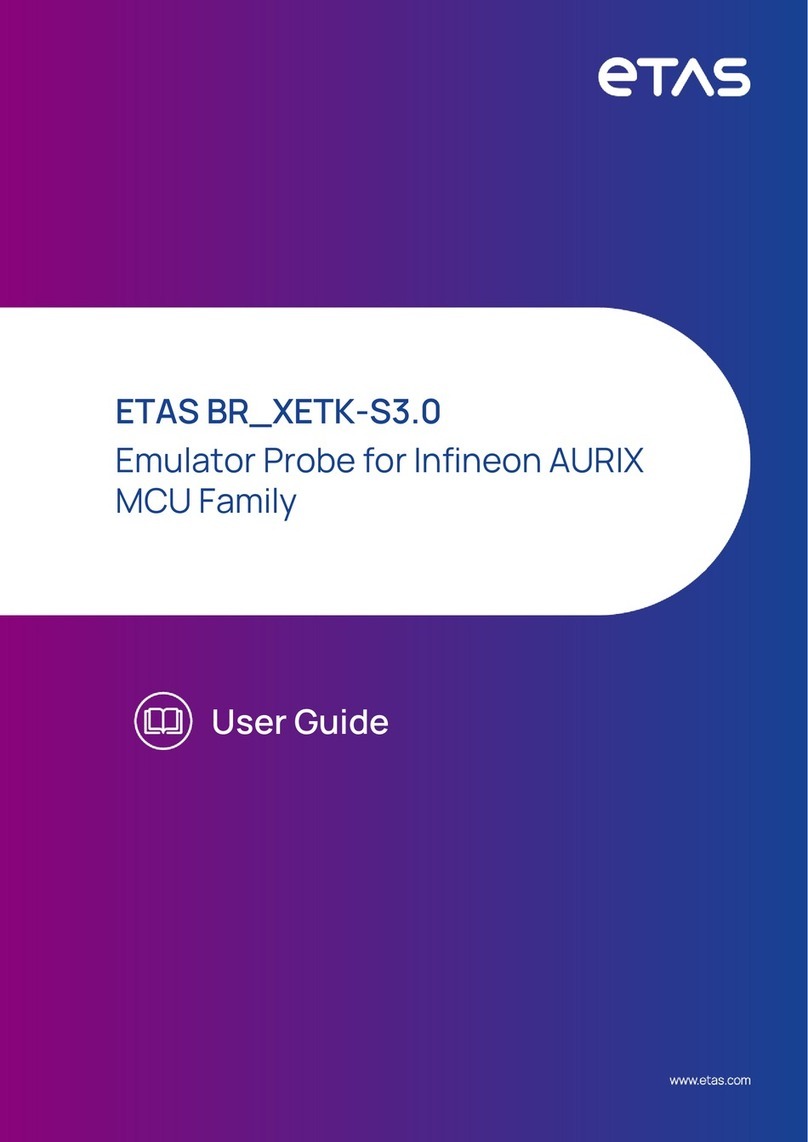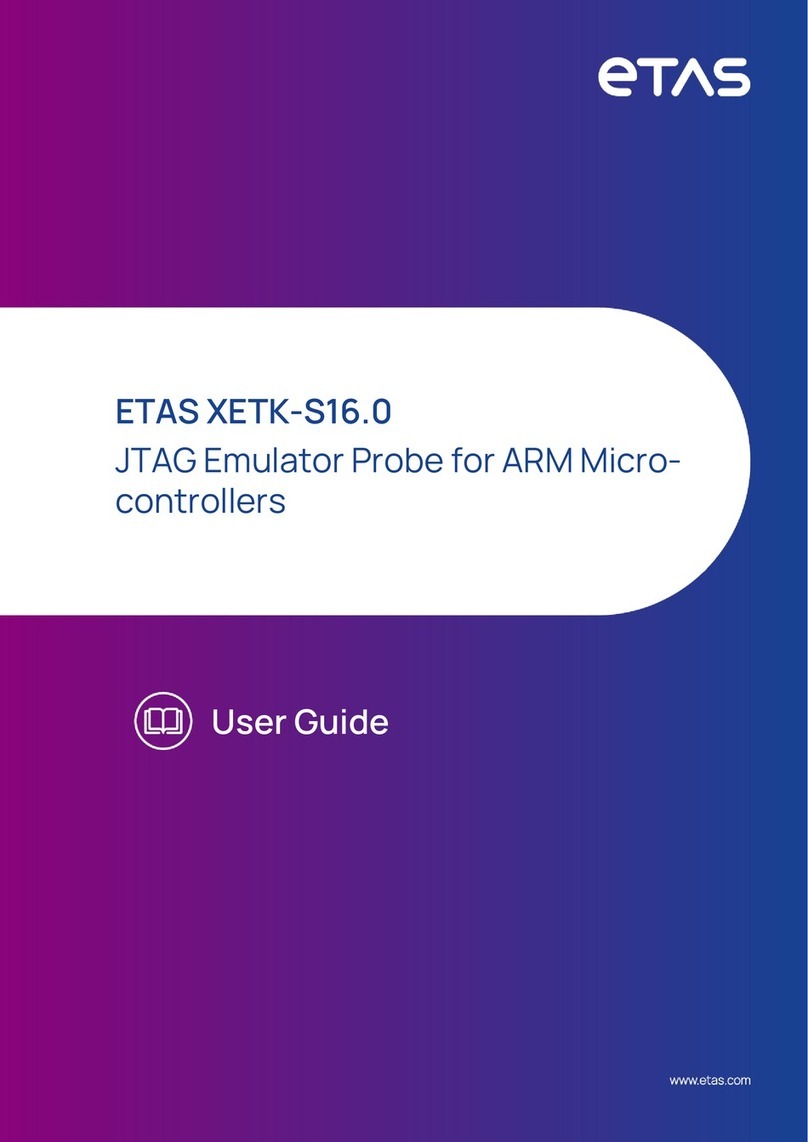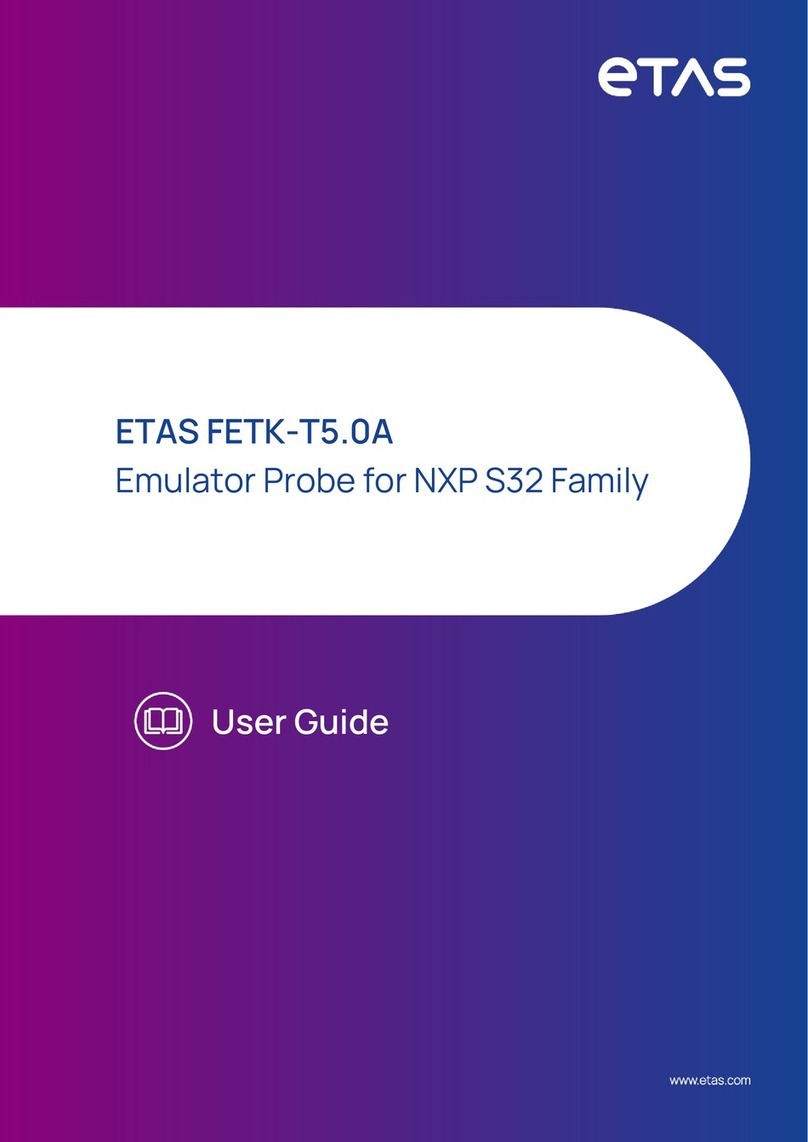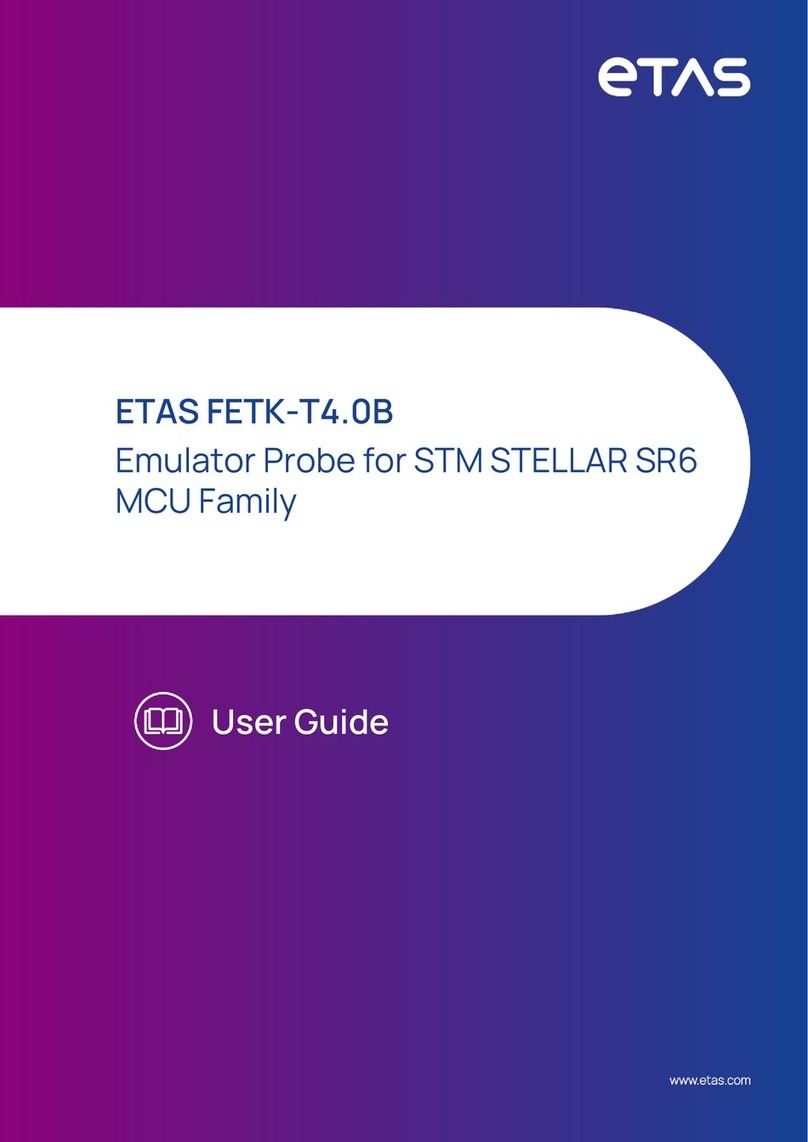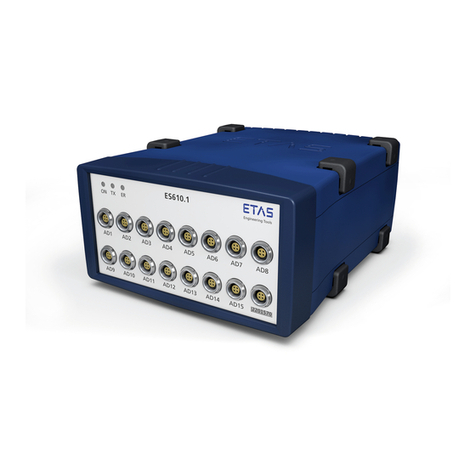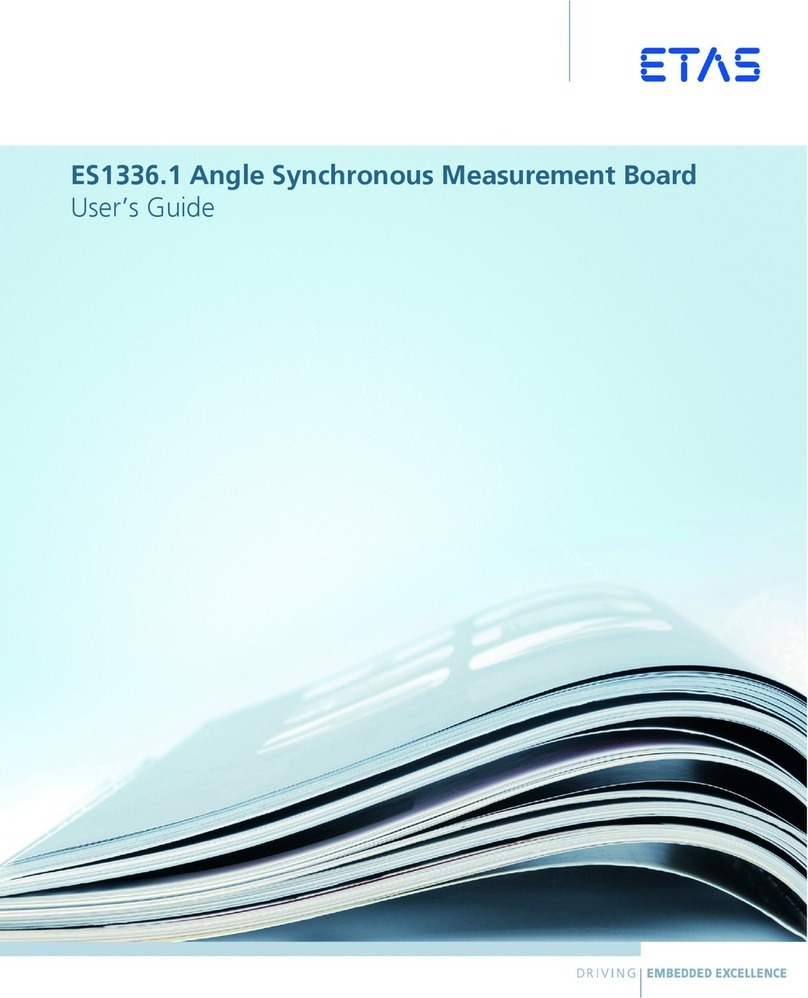
BR_XETK-S2.0 - User’s Guide 4
ETAS Contents
4.5.2 Measurement Data Memory . . . . . . . . . . . . . . . . . . . . . . . . . . . . . 20
4.5.3 Triggering of Measurement Data Capture . . . . . . . . . . . . . . . . . . . 21
4.5.4 Data Retention in Data Emulation Memory . . . . . . . . . . . . . . . . . . 22
4.6 Data Flash Memory . . . . . . . . . . . . . . . . . . . . . . . . . . . . . . . . . . . . . . . . . . . 22
4.7 Code Flash Memory . . . . . . . . . . . . . . . . . . . . . . . . . . . . . . . . . . . . . . . . . . 22
4.8 Braindead Flashing . . . . . . . . . . . . . . . . . . . . . . . . . . . . . . . . . . . . . . . . . . . 22
4.9 ETK-T2.2G Deactivation . . . . . . . . . . . . . . . . . . . . . . . . . . . . . . . . . . . . . . . 23
4.10 Reset . . . . . . . . . . . . . . . . . . . . . . . . . . . . . . . . . . . . . . . . . . . . . . . . . . . . . 23
4.11 Power Supply . . . . . . . . . . . . . . . . . . . . . . . . . . . . . . . . . . . . . . . . . . . . . . . 25
4.12 Serial ETK Interface . . . . . . . . . . . . . . . . . . . . . . . . . . . . . . . . . . . . . . . . . . . 26
4.13 Debug Interface . . . . . . . . . . . . . . . . . . . . . . . . . . . . . . . . . . . . . . . . . . . . . 27
4.14 Status LEDs . . . . . . . . . . . . . . . . . . . . . . . . . . . . . . . . . . . . . . . . . . . . . . . . . 28
4.15 Chip Select Configuration Bridge . . . . . . . . . . . . . . . . . . . . . . . . . . . . . . . . 29
5Installation . . . . . . . . . . . . . . . . . . . . . . . . . . . . . . . . . . . . . . . . . . . . . . . . . . . . . . 30
5.1 Connection to the ECU . . . . . . . . . . . . . . . . . . . . . . . . . . . . . . . . . . . . . . . 30
5.2 Connection to the Debugger . . . . . . . . . . . . . . . . . . . . . . . . . . . . . . . . . . . 31
5.3 Connecting to the Power Supply . . . . . . . . . . . . . . . . . . . . . . . . . . . . . . . . . 32
5.3.1 Permanent Power Supply inside ECU available . . . . . . . . . . . . . . . . 32
5.3.2 Permanent Power Supply inside ECU not available . . . . . . . . . . . . . 32
5.3.3 Isolated Power Supply inside ECU . . . . . . . . . . . . . . . . . . . . . . . . . 33
6ETK Configuration . . . . . . . . . . . . . . . . . . . . . . . . . . . . . . . . . . . . . . . . . . . . . . . . 34
6.1 Overview . . . . . . . . . . . . . . . . . . . . . . . . . . . . . . . . . . . . . . . . . . . . . . . . . . 34
6.2 ETK Configuration Tool . . . . . . . . . . . . . . . . . . . . . . . . . . . . . . . . . . . . . . . . 34
6.3 Configuration Parameter . . . . . . . . . . . . . . . . . . . . . . . . . . . . . . . . . . . . . . 34
7Technical Data . . . . . . . . . . . . . . . . . . . . . . . . . . . . . . . . . . . . . . . . . . . . . . . . . . . 36
7.1 System Requirements . . . . . . . . . . . . . . . . . . . . . . . . . . . . . . . . . . . . . . . . . 36
7.1.1 ETAS Hardware . . . . . . . . . . . . . . . . . . . . . . . . . . . . . . . . . . . . . . . 36
7.1.2 Software and supported Microcontrollers . . . . . . . . . . . . . . . . . . . 36
7.2 Environmental Conditions . . . . . . . . . . . . . . . . . . . . . . . . . . . . . . . . . . . . . 36
7.3 Power Supply . . . . . . . . . . . . . . . . . . . . . . . . . . . . . . . . . . . . . . . . . . . . . . . 36
7.4 Memory and Configuration . . . . . . . . . . . . . . . . . . . . . . . . . . . . . . . . . . . . 37
7.5 Serial ETK Interface . . . . . . . . . . . . . . . . . . . . . . . . . . . . . . . . . . . . . . . . . . 37
7.6 Microcontroller Bus Interface . . . . . . . . . . . . . . . . . . . . . . . . . . . . . . . . . . . 37
7.7 Testcharacteristics . . . . . . . . . . . . . . . . . . . . . . . . . . . . . . . . . . . . . . . . . . . 38
7.8 Electrical Characteristics . . . . . . . . . . . . . . . . . . . . . . . . . . . . . . . . . . . . . . . 39
7.9 Switching Characteristics . . . . . . . . . . . . . . . . . . . . . . . . . . . . . . . . . . . . . . 41
7.9.1 Read Timing: Data Emulation and Measurement Data DPR . . . . . . 41
7.9.2 Write Timing: Data Emulation and Measurement Data DPR . . . . . . 42
7.10 Power Supply Connector CON2 . . . . . . . . . . . . . . . . . . . . . . . . . . . . . . . . . 42
7.11 Mechanical Dimensions . . . . . . . . . . . . . . . . . . . . . . . . . . . . . . . . . . . . . . . 43
8Cables and Accessories . . . . . . . . . . . . . . . . . . . . . . . . . . . . . . . . . . . . . . . . . . . . . 45
8.1 Interface Cables . . . . . . . . . . . . . . . . . . . . . . . . . . . . . . . . . . . . . . . . . . . . . 45
8.1.1 Cable KA54 (with PG Cable Gland) . . . . . . . . . . . . . . . . . . . . . . . . 45
8.1.2 Cable KA55. . . . . . . . . . . . . . . . . . . . . . . . . . . . . . . . . . . . . . . . . . 47
8.1.3 Cable CBAM200 . . . . . . . . . . . . . . . . . . . . . . . . . . . . . . . . . . . . . . 47
8.2 Power Supply Cables . . . . . . . . . . . . . . . . . . . . . . . . . . . . . . . . . . . . . . . . . 48



